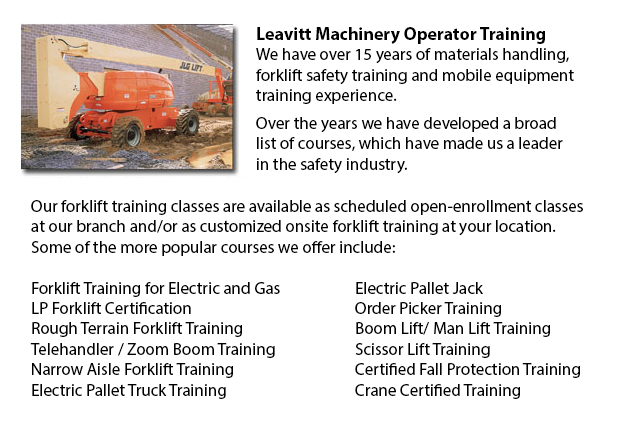
Boom Lift Safey Training Edmonton - Boom lifts are a type of elevated work platform or aerial lifting device that are commonly utilized in warehousing, construction and industry. Boom lifts can be utilized in practically whichever surroundings due to their versatility.
The elevated work platform is used in order to enable access to heights which were otherwise inaccessible making use of other methods. There are dangers inherent when using a boom lift device. Employees who operate them must be trained in the right operating procedures. Accident avoidance is vital.
The safety factors that are involved in boom lift operation are included in our Boom Lift Training Programs. The course is best for people who operate self-propelled boom supported elevated work platforms and self-propelled elevated work platforms. Upon successfully finishing the course, participants would be given a certificate by someone certified to confirm the completion of a hands-on evaluation.
Industry agencies, federal and local regulators, and lift manufacturers all play a role in establishing standards and providing information to be able to help train operators in the safe utilization of elevated work platforms. The most important ways in avoiding accidents connected to the use of elevated work platforms are the following: performing site assessments; checking machines; and having on safety gear.
Important safety factors when operating Boom lifts:
Operators stay away from power line, observing the minimum safe approach distance (MSAD). Voltage can arc across the air to be able to find an easy path to ground.
In order to maintain stability as the platform nears the ground, a telescopic boom must be retracted before lowering a work platform.
Personnel working from the platform of a Boom lift must tie off so as to ensure their safety. Safety harness and lanyard combinations should not be attached to any anchorage other than that provided by the manufacturer, never to other wires or poles. Tying off may or may not be required in scissor lifts, depending on particular local rules, employer guidelines or job risks.
Avoid working on a slope which goes beyond the maximum slope rating as specified by the manufacturer. If the slop exceeds requirements, therefore the machine should be transported or winched over the slope. A grade can be easily measured by laying a straight board or edge of at least 3 feet on the slope. Next a carpenter's level could be laid on the straight edge and raising the end until it is level. The percent slope is obtained by measuring the distance to the ground (the rise) and dividing the rise by the length of the straight edge. Then multiply by one hundred.
-
Forklift Training Programs Edmonton
Forklift Training Programs Edmonton - If you are searching for work as an operator of a forklift, our regulatory-compliant lift truck training programs provide excellent instruction in numerous styles and types of forklifts, classes on pre-shift insp... More -
Heavy Equipment Training School Edmonton
Heavy Equipment Training School Edmonton - The heavy equipment operator courses will assist the operator in acquiring the required skills and knowledge they will require to be able to enter the workforce as an entry level operator. In this 12 week co... More -
Manlift Ticket Edmonton
Manlift Ticket Edmonton - The Elevated Platforms and Manlifts Certification program helps to provide the necessary training on the safe operating procedures, work practice, rules and regulations regarding the daily activities for the operators of thi... More -
Crane License Edmonton
Crane License Edmonton - Crane operators must be "credentialed", which means they must have a crane operator license or certification. Credentialing is considered a mandatory governmental requirement in order to practice as a crane operator. Having a... More -
Counterbalance Forklift License Edmonton
Counterbalance Forklift License Edmonton - When operated by totally trained operators, forklifts could become a major advantage for firms and companies. We could offer your staff a comprehensive training program which covers all aspects of operating... More -
Manlift Safety Training Edmonton
Manlift Safety Training Edmonton - Manlift operators have to be aware and cognizant of all the potential hazards which are associated with particular types of scissor lifts. They need to be able to operate the scissor lift in a way that protects not... More -
Forklift Training School Edmonton
Forklift Training School Edmonton - Forklift Training School And Reasons Why It Is Really Important - Industry and federal regulators have established the criteria for forklift safety training based on their existing standards and regulations. Indivi... More -
Overhead Crane Safety Training Edmonton
Overhead Crane Safety Training Edmonton - The overhead crane safety training course is designed to equip the operators with the right skills and knowledge in the areas of: crane safety precautions, materials handling, accident avoidance, and equipmen... More

Forklift Training Edmonton
crossorigin="anonymous">
TOLL FREE: 1-888-254-6157
Edmonton, Alberta
forklifttrainingedmonton.com
Email Us
About Us


